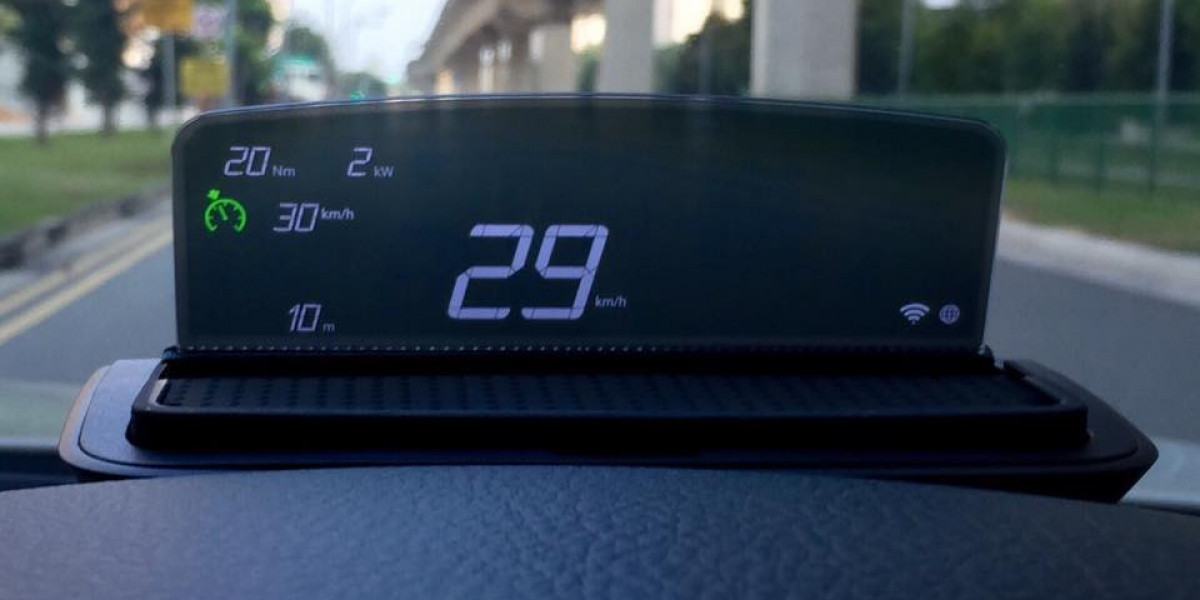Introduction
The Head Up Display market is witnessing a dramatic evolution, as rapid technological advancements redefine how users interact with information in real time. No longer confined to basic speed and navigation data, modern HUDs now integrate augmented reality (AR), artificial intelligence (AI), and advanced optics, delivering immersive and intuitive experiences. These innovations are not only enhancing safety but also reshaping user expectations across automotive, aviation, and wearable technology sectors.
HUD Evolution: From Simple Projections to Smart Interfaces
Originally developed for fighter aircraft, HUDs have expanded into commercial aviation, consumer vehicles, and smart wearables. Their primary goal remains the same: to display critical data directly in the user's line of sight without distraction. However, what has changed is how and what they display—thanks to groundbreaking technological upgrades.
Key Technology Advancements Reshaping HUD Experiences
1. Augmented Reality Integration
AR has revolutionized HUD functionality by enabling interactive, real-world overlays. Instead of static data, users now receive dynamic visual cues.
In automobiles, AR HUDs project navigation arrows directly onto the road, highlighting turns, lane changes, and potential hazards.
In aviation, AR enhances pilot visibility in poor weather conditions with real-time terrain mapping and runway alignment visuals.
This immersive experience significantly boosts situational awareness and reaction time for both drivers and pilots.
2. AI and Machine Learning Enhancements
Artificial Intelligence is playing a pivotal role in creating context-aware HUD systems. AI-powered HUDs adapt their content based on:
Driver behavior and preferences
Road and traffic conditions
In-vehicle sensor data
For example, a vehicle HUD might reduce display clutter during complex maneuvers or prioritize emergency warnings when needed, enhancing decision-making and safety.
3. Advanced Display Technologies
Cutting-edge display innovations are making HUDs clearer, thinner, and more efficient. Key technologies include:
Waveguide optics: Used in wearables and advanced automotive HUDs to transmit images through transparent surfaces without distortion.
MicroLED and OLED displays: Offering high brightness, contrast, and color accuracy even in direct sunlight.
Laser-based projection systems: Allowing high-definition graphics and seamless integration into windshields and visors.
These advancements ensure better visibility, smaller form factors, and greater energy efficiency.
4. Eye-Tracking and Gesture Control
HUDs are becoming more interactive with the inclusion of eye-tracking sensors and gesture recognition. These systems allow users to:
Switch views by moving their eyes
Dismiss or prioritize alerts with simple hand gestures
This creates a more intuitive user experience, particularly useful in environments like cockpits, where hands-free operation is critical.
Impact on Automotive and Aviation Sectors
Automotive Innovation
Major automakers are leveraging these advancements to create next-generation cockpits:
BMW, Audi, and Mercedes-Benz offer full-color AR HUDs with wide fields of view.
EV manufacturers like Tesla and Lucid Motors are integrating HUDs into minimalistic dashboards, enhancing both design and functionality.
HUDs are also being tailored for autonomous vehicles, displaying information about surrounding objects, road conditions, and system status in real-time.
Aviation Advancements
In aviation, HUD technology is being integrated into both commercial jets and military aircraft to improve operational precision and flight safety:
Enhanced Flight Vision Systems (EFVS) use HUDs to support landings in poor visibility.
Helmet-mounted displays provide 360° AR visualizations for pilots.
These innovations support quicker decision-making and reduced pilot fatigue.
Expanding into Consumer Wearables
With the rise of smart glasses and AR devices, HUD technology is finding new use cases in:
Cycling and fitness wearables (e.g., Everysight Raptor)
Industrial smart glasses for logistics, manufacturing, and field work
Mixed reality headsets offering hands-free navigation and communication
These devices use compact HUD systems to deliver real-time, contextual information, improving productivity and safety across various industries.
Conclusion
Technological advancements are reshaping the HUD market, transitioning it from basic data projection tools to intelligent, immersive experience platforms. By integrating AR, AI, and advanced optics, HUDs now offer richer, more personalized, and safer interfaces across vehicles, aircraft, and wearable devices.
As these innovations continue, the HUD market is set to play a pivotal role in the future of human-machine interaction, delivering smarter, more intuitive ways for users to engage with their environment—without ever taking their eyes off the road, sky, or task at hand.







